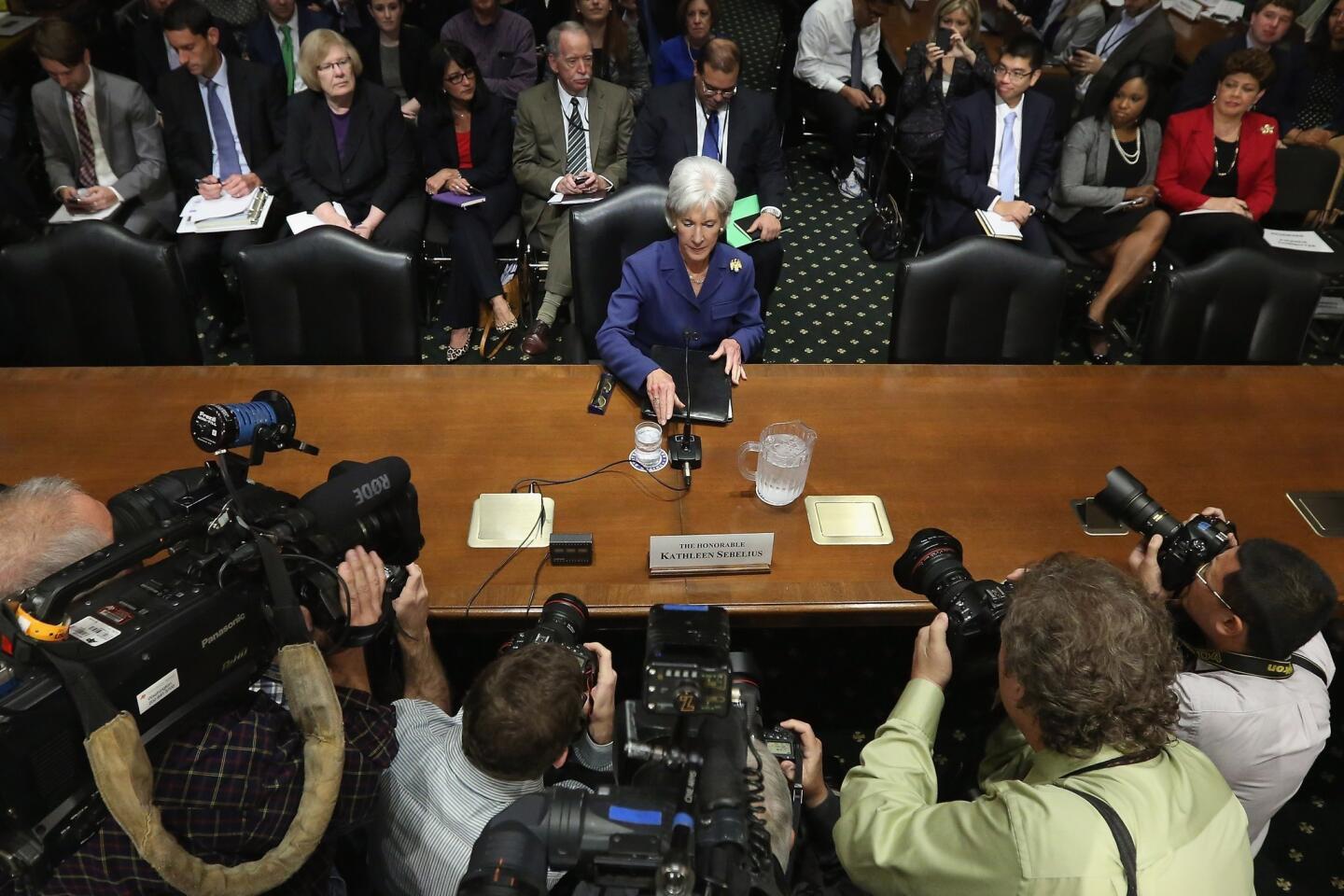Population rising faster in South and West, census data show
WASHINGTON — Population growth in Southern and Western states, led by Texas, California and Florida, accounted for more than 80% of new residents nationwide over the last three years, surpassing the Northeast and Midwest in the demographic contest that plays a key role in determining states’ political clout, census data released Monday show.
If states continue to grow at the same pace for the rest of the decade, Texas could gain three more congressional seats in 2020, according to a Times analysis of the Census Bureau figures. Florida, North Carolina, Virginia and Colorado would stand to gain one seat each, while Illinois, Pennsylvania, Ohio, Michigan and Minnesota, West Virginia and Rhode Island would lose a seat each.
Population estimates are eagerly watched by state officials because the figures determine the flow of money into many federal programs and the number of seats each state receives in the House of Representatives. That number gets readjusted each decade.
The new data reinforce a trend that has seen Southern states’ growth outpace that of the Northeast and Midwest. Texas, which gained four seats in the last round of congressional reapportionment, lagged behind only North Dakota and the District of Columbia in the rate of population growth since the 2010 census.
TIMELINE: The year in politics
California, with 38,332,521 residents, and Texas, with 26,448,193, remain the nation’s most populous states.
New York narrowly maintained its third-place spot with 19,651,127 residents, compared with Florida’s 19,552,860, as of July 1. But the Sunshine State will soon surpass New York because its population is growing about three times faster, according to the census estimates, which are based on data measuring births, deaths and migration.
As a percent of population, California’s growth again outpaced the national average over the last year, rising 0.9%, or 332,643 new residents, compared with 0.7% nationwide.
But in raw numbers, Texas added the most residents, 387,397.
An improving state economy in the second half of 2013 may augur faster growth in California, but Texas still has an advantage because of its energy-based economy and a population that is trending younger.
Texas is “going to keep growing a cumulative advantage in redistricting, until the oil economy turns [down] again,” said Dowell Myers, a demography expert and professor at USC’s Price School of Public Policy. “But California’s adding jobs more rapidly now than Texas. So probably next year I would bet that California’s share of the growth is up a little bit more.”
North Dakota is the nation’s fastest-growing state, driven by a thriving oil and gas industry. North Dakota’s population stood at 723,393 on July 1, according to the census data, a 3.1% increase from 2012. Since the 2010 census, North Dakota’s population has grown 7.6%, far outpacing the national rate of 2.4%.
Kevin Iverson, manager of the North Dakota Census Office, says the biggest population growth has been among 19- to 34-year-olds, primarily through migration.
PHOTOS: 2013’s political moments
“The economic winds have clearly favored North Dakota,” Iverson said, attributing it mainly to the energy boom but also growth in the manufacturing and agriculture sectors. “The real question begins to become, to what extent can you continue to grow?”
Population in the District of Columbia also grew at a sustained clip, rising 2.1% from 2012 to 2013 to 646,449. Utah grew the next fastest, at a rate of 1.6%, followed by Colorado and Texas at 1.5% and Nevada at 1.3%.
West Virginia and Maine saw slight population declines in the last year. Pennsylvania, New Mexico, Vermont and Illinois posted the slowest population growth, all at or near a tenth of 1 percentage point.
The national population stood at 316,128,839 on July 1, an increase of 2.3 million. But the annual growth rate nationally continues to lag behind where it was in the mid-2000s before the economic downturn.
More to Read
Start your day right
Sign up for Essential California for news, features and recommendations from the L.A. Times and beyond in your inbox six days a week.
You may occasionally receive promotional content from the Los Angeles Times.












































